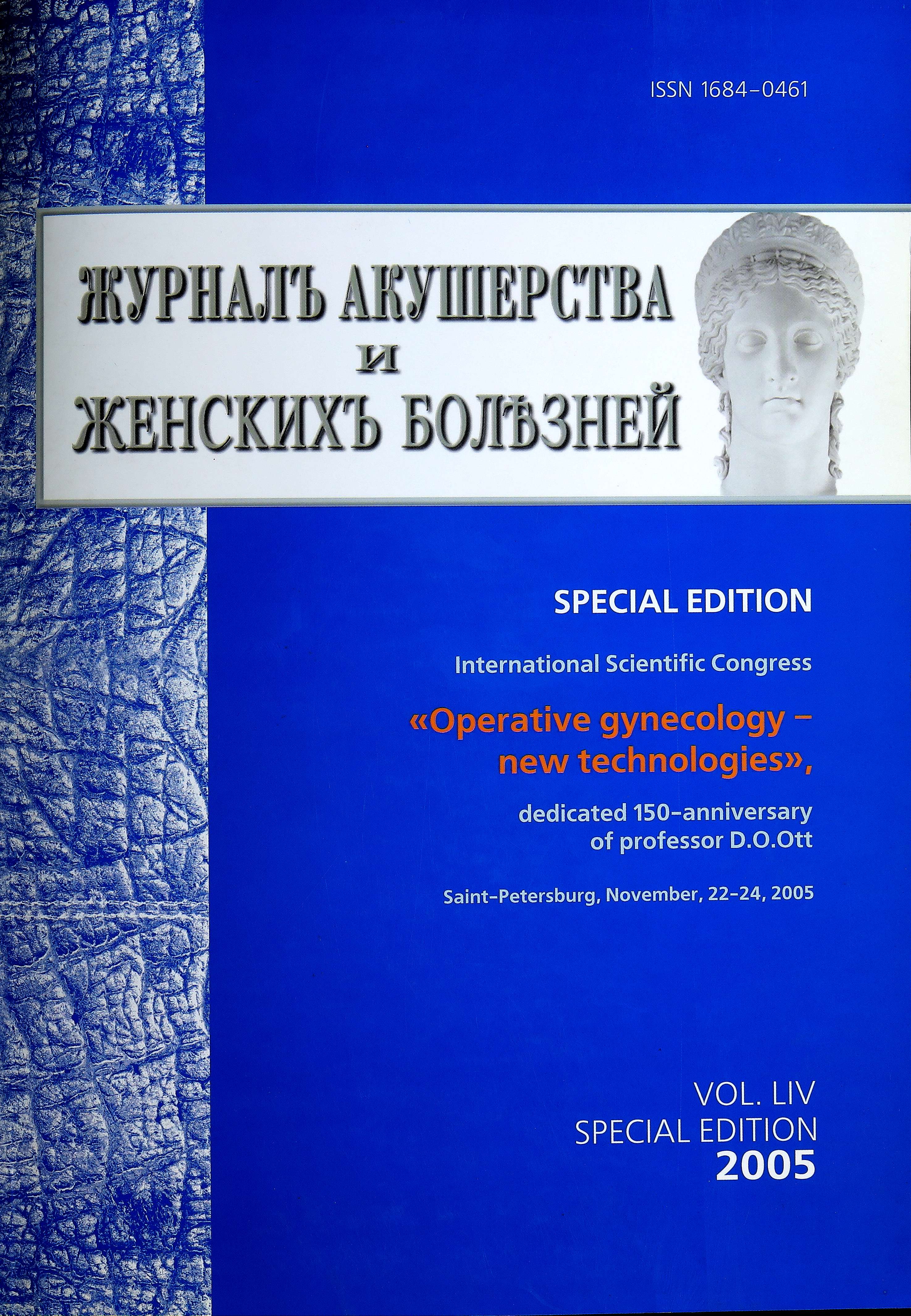Management of urologic trauma after gynecologic and obstetric procedures
- Authors: Tsivian А.1
-
Affiliations:
- Wolfson Medical Center
- Issue: Vol 54, No 5S (2005)
- Pages: 67a-67a
- Section: Reviews
- Submitted: 15.11.2005
- Published: 15.11.2005
- URL: https://journals.eco-vector.com/jowd/article/view/87231
- DOI: https://doi.org/10.17816/JOWD87231
- ID: 87231
Cite item
Full Text
Abstract
Introduction. The anatomical proximity of the lower urinary tract to the female reproductive organs renders it vulnerable to injury during obstetric and gynecologic procedures.
Full Text
Introduction. The anatomical proximity of the lower urinary tract to the female reproductive organs renders it vulnerable to injury during obstetric and gynecologic procedures. Overall, the reported incidence of iatrogenic injury is between 0,5% and 2% for gynecologic and pelvic operations; however, the true incidence is difficult to ascertain from the literature because most studies are retrospective and only review patients who have become symptomatic, requiring urological intervention. Herein we retrospectively report our experience of diagnosis and treatment of iatrogenic injuries of urethra, bladder and ureters in female.
Materials and methods. Between 1987 and 2005, 125 women with a mean age of 48 years ( ranged 22 - 85 ) were included into this study, bladder injuries -58 patients, ureteral -52(4- bilateral), and urethral -15. Hysterectomy was the most common antecedent surgical procedure ( 64% ).
Results. Bladder: 15 of 58 injuries were diagnosed intraoperatively and sutured, 14 - managed conservatively by urethral catheter placement only, 12 - underwent re-laparotomy and bladder tear suturing, 17 - vesico-vaginal fistula repair.
Urethra: Seven of 15 injured urethra were sutured during primary surgery ( one complication - urethra- vaginal fistula formation ), 1 - treated by indwelling catheter placement. 2 patients underwent urethral dilation for stricture, and 5 - urethro-vaginal fistula repair.
Ureter: Seven of 56 ureteral injuries were diagnosed and repaired during the primary operation. 45 patients required additional surgery: uretero-ureteroanastomosis - 16, release of ureter - 7, neoureterocystoanastomosis - 16, psoas hitch ureteral reimplantation - 10. The definitive corrective surgery followed percutaneous nephrostomy placement in 17 cases, transurethral orifice incision - 1, ureteral catheter or stent insertion - 4. 3 patients underwent nephrectomy for longstanding non-functioning kidney. Reconstructive ureteral surgery was successful in all cases.
Conclusions.
- The key to successful management remains a high index of suspicion with early imaging and early re-intervention.
- Open surgical technique give far better results than minimally invasive therapies.
- Successful repair may be achieved in the vast majority of patients.
About the authors
А. Tsivian
Wolfson Medical Center
Author for correspondence.
Email: info@eco-vector.com
Dept. Urologic Surgery
Israel, HolonReferences
Supplementary files







